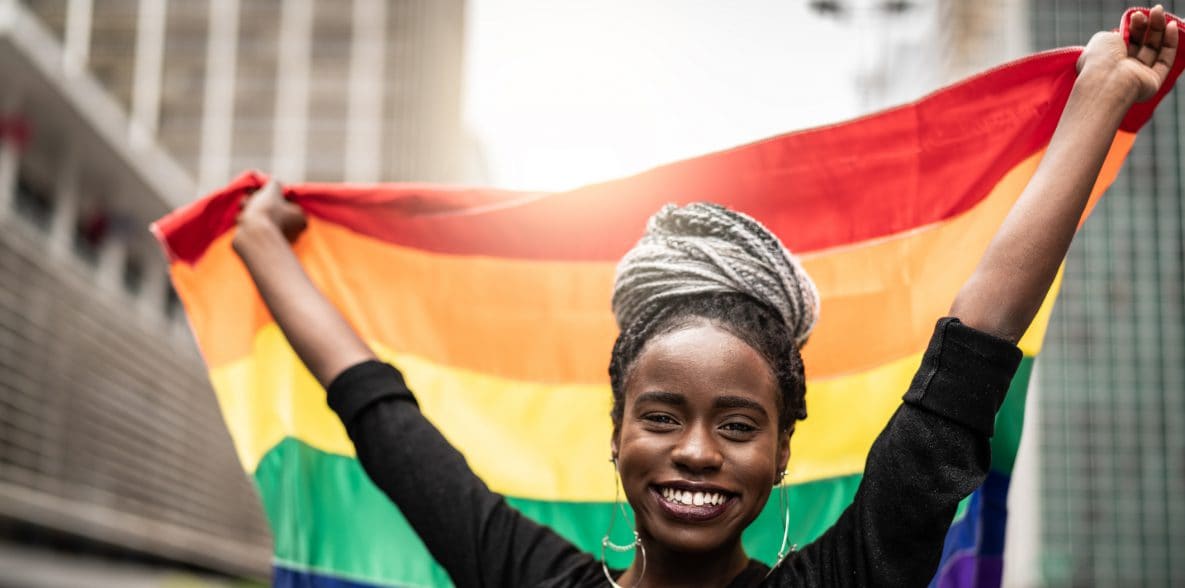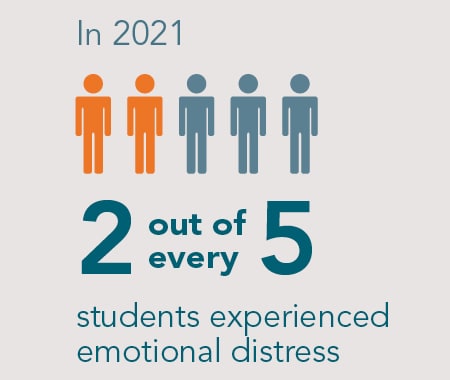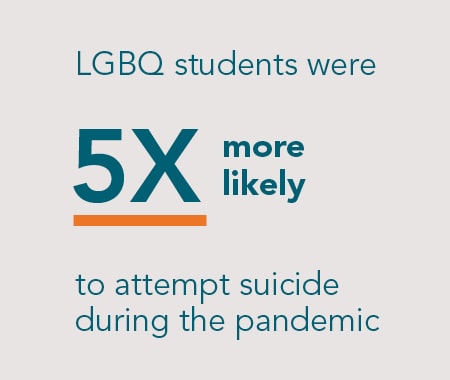Inclusive Practices Help All Students Thrive

Adolescents are experiencing a mental health crisis.
Youth were struggling with their mental health before the COVID-19 pandemic. This is especially true for youth who identify as lesbian, gay, bisexual, transgender or questioning (LGBTQ).
Recent CDC data show that adolescents are experiencing widespread emotional distress, worsened by stressors experienced during the COVID-19 pandemic. The pandemic affected all students, but it did not affect all students equally. While poor mental health is common in youth, it is reported far more often by LGBTQ youth.


Schools can help address the adolescent mental health crisis by implementing policies and practices that support LGBTQ youth. CDC research shows that inclusive practices benefit LGBTQ students and heterosexual students, with heterosexual students seeing greater benefit in some risk categories. The reverse is also true. Restrictive LGBTQ policies and practices negatively impact heterosexual students as well.
 Less emotional distress
Less emotional distress Less violence and harassment
Less violence and harassment Less suicidal thoughts and behaviors
Less suicidal thoughts and behaviors
The more policies and practices a school implements the better the student health outcomes.

LGBTQ-supportive policies and practices positively affect a school’s environment, making a safer and more supportive space for ALL students. They include:

Gender and Sexuality Alliances

Professional development on inclusivity

Identifying safe spaces

Implementing anti-harassment policies
CDC’s School Practices that Work
CDC’s What Works In Schools program combines safe and supportive school environments with quality health education and referrals to health services to create a three-strategy, school-based approach to protecting and promoting adolescent health.
Schools that implement What Works In Schools see positive outcomes on the number of students experiencing violence, drug use, risky sex behaviors, and poor mental health.
Resources
- Adolescent Behaviors and Experiences Survey (ABES)
- Creating Safe Schools for LGBTQ+ Youth
- Examining the Relationship Between LGBTQ-Supportive School Health Policies and Practices and Psychosocial Health Outcomes of Lesbian, Gay, Bisexual, and Heterosexual Students
- Mental Health
- Resources for LGBTQI+ Students
- Supporting LGBTQ Youth